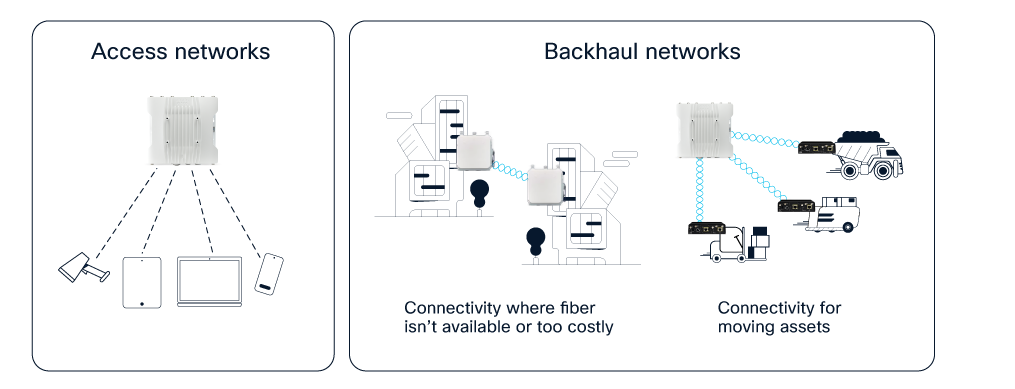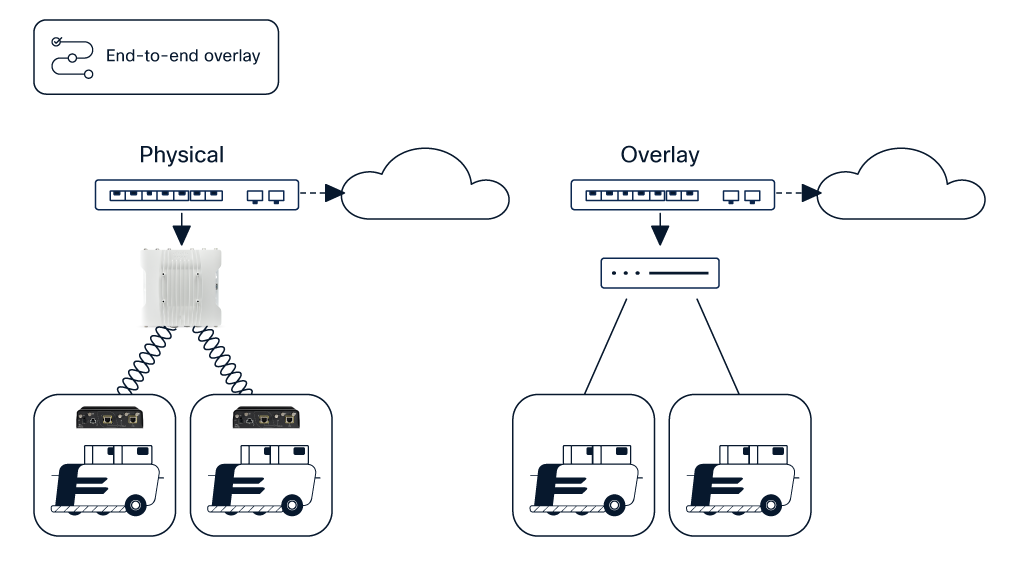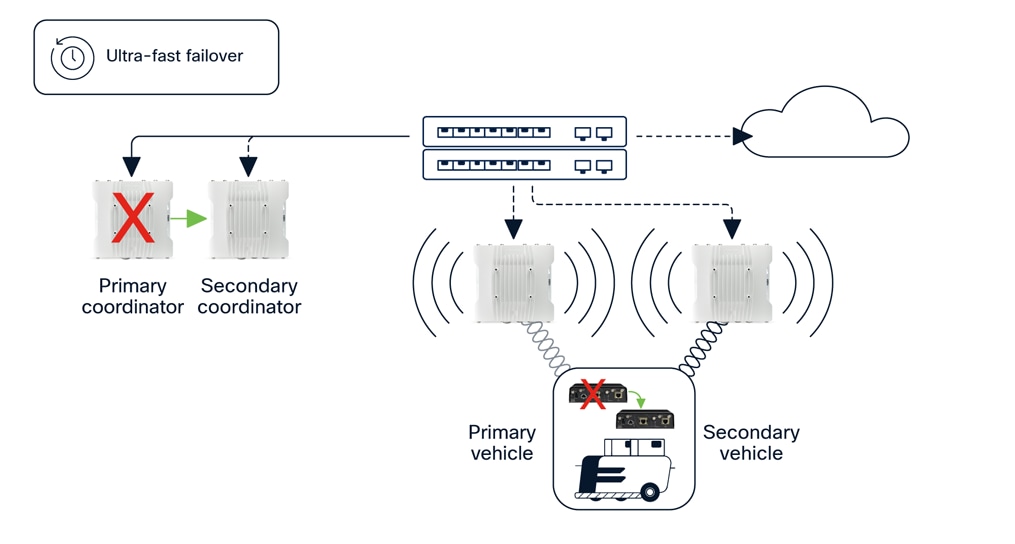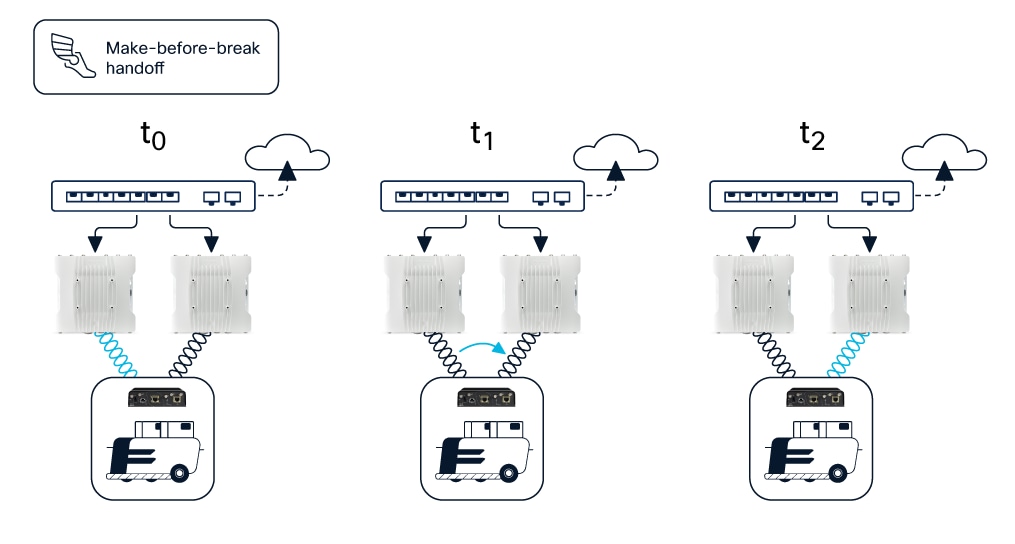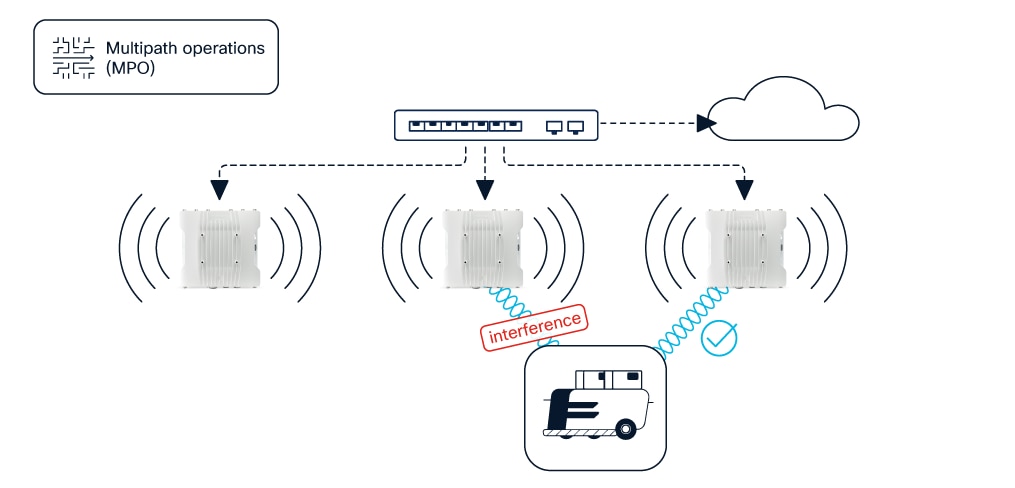Which industries have deployed URWB?
URWB provides organizations in a wide range of industries with dependable wireless connectivity for mission-critical applications.
Utilities and renewables
For ScottishPower Renewables, URWB delivered essential long-range wireless connectivity for sea vessels during the construction and operational phases of the company's offshore wind farms.
Port and terminal operations
Ports and terminals such as Port of Thessaloniki, La Spezia Container Terminal, Malta Freeport Terminals, and DP World Evyap Körfez depend on URWB to power their Terminal Operating Systems (TOSs) and to connect cranes, teleremote rubber-tired gantries (RTGs), and autonomous vehicles.
Manufacturing
URWB helps manufacturers to connect vehicles, mobile tooling, and production lines, offering more flexibility and cutting costs by eliminating cabling. General Motors uses URWB to capture real-time sensor data during vehicle testing, making immediate adjustments to speed development and get vehicles to market faster. Other manufacturers rely on URWB to quickly scale their fleets of AGVs.
Rail
With uninterrupted handoffs, even at high speeds, rail companies use URWB to connect applications such as Communications-Based Train Control (CBTC), sensors, video offload, onboard Wi-Fi, and real-time security monitoring. These URWB uses help to build passenger satisfaction, support safety and control, and boost situational awareness for optimal rail operations.
Mining
Mine automation improves productivity, keeps operations consistent, and enhances worker safety. Mines use URWB for vehicle-to-ground communication, enabling vehicle automation and real-time video monitoring with low latency and uninterrupted handoffs. Brazilian engineering firm Aterpa relies on URWB to boost worker safety with real-time remote control of unmanned vehicles that operate in hazardous areas.
Smart cities, education, digital equity
URWB is faster and more affordable to deploy than fiber, making it a smart choice for reliable broadband in cities, schools, colleges, and universities. Canutillo Independent School District uses URWB to connect Wi-Fi hotspots in remote areas, helping thousands of students to learn from home. The City of Fort Worth gave free Wi-Fi to 40,000 residents across 10,000 low-income households, with access to city services, telehealth, jobs, and education.
Entertainment
URWB powers dark rides in theme parks where ultra-reliable wireless is a must for safety and a smooth guest experience. A ride's vehicles weave through enclosed spaces full of walls and obstacles—sometimes at high speeds—which makes uninterrupted connectivity critical to keep sound and visual effects in sync and to monitor the ride for safety issues.

